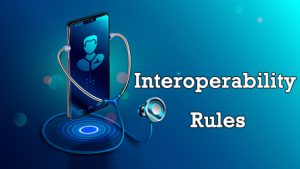In the Era of Public Health Emergencies, Interoperability Rules are a Beacon for More Precision in Public Health
Posted on by
In the current wake of COVID-19, it is evident that the public health ecosystem needs to modernize how we gather, make sense of, and disseminate data from multiple sources. The health threats we face today spread wider and change faster than the data flows our traditional approaches were designed to accommodate. Becoming more adept with data and leveraging the computational power of modern electronic systems using machine learning and data science can help public health organizations achieve more precision in many ways such as:
- Better understand patterns of contagion in a highly connected world.
- Anticipate where outbreaks (or even individual cases) are likely to occur so that we can deliver population-level interventions and provide trusted information to the public.
- Leverage new data feeds (e.g., pathogen genomics and precision health technologies) that could supplement and extend the insights available from existing surveillance and program data to develop effective prevention strategies.
On March 9, 2020, the US Government finalized two regulations that lay the groundwork for accessing and exchanging data in the 21st Century. Collectively, the rules promulgated by Office of the National Coordinator for Health IT and the Centers for Medicare and Medicaid Services establish the standards and policies through which health data and payment data will be made available to patients in more standardized ways using modern technologies. Recognizing that individuals shoulder increasing responsibility in their health outcomes, these rules also establish new norms for bringing innovations to the health ecosystem at faster rates. This is a significant paradigm shift, which provides public health organizations the opportunity and the responsibility to conduct their work through a more patient-centered lens:
- Instead of relying on paper, faxes, or manual data entry into public health data systems that are disconnected from the clinical workflow, tools that leverage the standardize data feeds could make it easier for astute clinicians and other data providers to recognize unusual patterns of disease among their patients and alert health departments more quickly.
- Evidence-based public health recommendations (such as guidelines and fact sheets) could be more seamlessly adopted into electronic health record vendor products as well as tools patients use every day, such as smartphones, and thus made more widely available.
- Feedback loops could be strengthened between public health organizations, care providers, individuals, and other stakeholders to provide public health context (such as incidence and prevalence) to help inform decisions about when to seek care and what level of care is needed (e.g., self-care, telemedicine, or in-person visit).
- The broader interoperability community could be engaged to ensure that core data elements needed for public health tracking, response, evaluation, quality improvement, and research are captured and structured in consistent ways to help drive more personalized interventions to improve the health outcomes of individuals and populations.
If adopted more broadly, these enhanced capabilities could give public health organizations a more complete picture of what is unfolding around us, what threats are on the horizon, and what targeted actions can be taken in real-time to prevent further harm or untimely deaths.
“The findings and conclusions in this blog are those of the author(s) and do not necessarily represent the official position of the Centers for Disease Control and Prevention/the Agency for Toxic Substances and Disease Registry.”
Posted on by


